| |
|

|
Home | Issues | Articles | Experimental Aviation Glossary | Video Hints for Homebuilders | Q&A | A Personal View | Polls
Welcome
Text goes here
· Needs very, very, very clear opening article, with 2 goals:
1. Communicate: “What is this?”
§ Needs to sell the product.
Should marketing get involved?
|
|

Friends, in order to keep receiving this eNewsletter each month, you must "opt-in". This is a one-time mailing and after this, you won't receive another issue unless you subscribe. Please have your EAA member number ready.
|
From the Founder's Desk
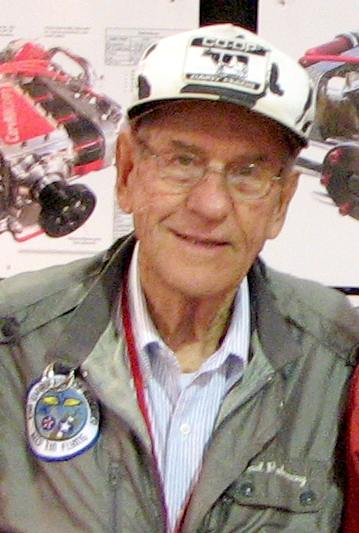 |
Welcome to the inaugural issue of Experimenter. I am pleased that EAA is creating an electronic newsletter expressly for aircraft homebuilders and other innovators—those who design and build an aircraft using their own imagination, determination, and skill. The name of the newsletter is very appropriate—Experimenter. It was the name we selected for our first EAA newsletter back in February 1953. Of course it wasn’t electronic back then. My wife, Audrey, typed it and made copies from a hand-cranked mimeograph machine. Things certainly have changed! But one thing that hasn’t changed is the spirit, imagination and determination of those who design, build, and fly homebuilt aircraft.
Experimenter is dedicated to sharing knowledge and experiences, successes as well as problems. We will address your questions, identify and alleviate fears and apprehensions, and discuss experiences and challenges. We will provide helpful tips for prospective and new builders and experienced builders alike.
|
|
EAA invites you to share your thoughts and ideas. Tell the editors, Pat Panzera and Joe Norris, about the challenges you faced while searching for or building that "perfect" project, panel, engine or prop. Share your flight-testing experiences. This newsletter is a path through which we can all share information and ideas with our fellow homebuilders. Sharing your knowledge and experiences with others, both in your EAA chapter and throughout the entire homebuilt community, is what helped EAA grow and continues to make EAA strong! Please send your thoughts, ideas, comments and questions to experimenter@eaa.org.
Paul H. Poberezny
Founder
Experimental Aircraft Association
|
|
Meet your new editor
By Patrick Panzera ppanzera@EAA.org
I'd love to introduce myself by writing that I have a bazillion hours, every rating possible, military and airline stick time, that I'm a DAR, Tech Counselor, the winner of any number of the prestigious EAA awards, and that I've designed, built and flown my own experimental aircraft as well as several other designs, but the truth is that none of this is even close to introducing me properly.
I'm certainly no superhero but as an EAA member and supporter, as well as the editor and publisher of CONTACT! Magazine, an independent, non-profit experimental aviation magazine, I was absolutely thrilled when I met with David Hipschman and Mary Jones to discuss my active participation with EAA publications, namely, this newsletter. With EAA's overt recommitment to the homebuilder's segment of general aviation, I couldn't be more honored than to be asked to help with this effort.
|
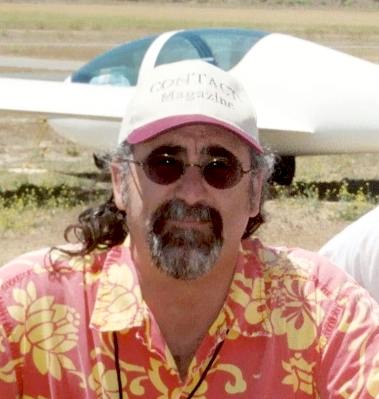 |
Read more
John Steere’s Supercharged Thunderbird Powered BD-4
|
Story By John Steere jsteere@tecwrite.com
Photos by Pat Panzera
We first reported on John Steere’s BD-4 in issue 66 of CONTACT! Magazine. A few years ago, we ran into John at AirVenture and asked him to give us a follow-up report. Here’s what he sent us:
THE AIRPLANE
The plane is a BD-4, completed in May of 2000. The BD-4 was chosen because it was easy to build, relatively inexpensive, carries four people, and is relatively fast. Never satisfied with the status quo, significant modifications were
|
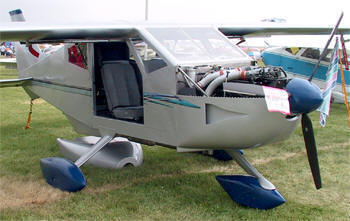
|
|
incorporated to accomplish specific objectives. The wings were lengthened twenty-two inches per side, the flap length increased by the same amount, and the flap deflection increased from 30 to 40 degrees, all to reduce the stall speed. The wing was changed from the original fiberglass wing panels to aluminum in an effort to reduce the fuel leakage problem frequently experienced with the fiberglass panels. Rudder trim was added, and both stabilator and rudder trim are driven by small, industrial, DC gear motors controlled by a small electrical joystick located between the front seats. The doors were modified to hinge from the top rather than the front, and were supported with gas springs. The objective was to enable opening the doors in flight for better photography. It also significantly improves cabin cooling while on the ground on hot days.
|
Read more
Is there a Spark Ignited Heavy Fuel Engine in your future?
By Anthony J. Liberatore aliberatore@comcast.net
|
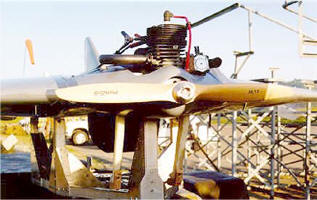
|
Imagine with today’s fuel prices, you are able to pull your aircraft up to the Jet A pump to save a little on your fuel bills. The concept is tantalizing, although I have been told it is nothing new. In order to help the war effort during WWII, some farmers would switch over to kerosene after getting the engine on their tractor warmed up. With a new war effort underway, a new military requirement has emerged that is a technology driver. This requirement is that all GPU’s, UAV’s, etc, with small engines, must run on JP-5 by 2010, in order to eliminate the logistics of carrying different fuel types into a theatre.
|
Read more
|
How To:
Fuel tank bonding for composite aircraft.
And some really good information for the rest of us.
By David Gall david@gall.com
Most things written on the subject of fuel tank bonding are good information, but do not address the issue from the designer/builder viewpoint of composite aircraft. We are responsible for constructing our plastic planes in such a manner that the ”normal” advice is applicable. To that end:
Static electricity builds up on the surface of fuel. Not throughout the bulk of the fuel, but on the SURFACE. The charge is a result of friction, either due to sloshing within a non-conductive tank, or due to traveling friction as when flowing through a pipe. When transferring fuel from one
|
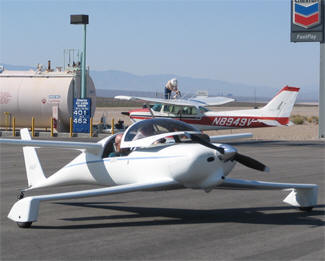 |
|
container to another (or from the pump or fuel truck), the fuel generates a tremendous electrical charge on the way out of the nozzle. The nozzle acts as a charge separator, dispensing fuel of one polarity while building a charge of opposite polarity on itself. Just like socks on carpet. If there is no conductive path for the resulting charge to make its way back to the nozzle by conduction through wires, it may make its own conductive path through the air: spark, just like fingers on a doorknob.
|
Read more
What our members are building and restoring
We really want to know!
Oscar Zuniga's M-19 "Flying Squirrel"
San Antonio, TX. EAA Member Number xxx taildrags@hotmail.com
Here's my construction philosophy. I intend to construct a modified KR-2S, but it will require at least 2000 hrs. of construction time and considerable shop space to do it right. In the meantime, I'm constructing a simpler project in order to learn and develop the skills needed for the KR project (wood gluing, foam/fiberglass construction, systems installation, fittings and control surfaces, etc.)... this critter is a Barnard M-19 "Flying Squirrel", and is expected to be the first plans-built M-19 if I ever get it done! Not only has this gotten me started learning the needed skills, but the plan is that it will give me
|
|
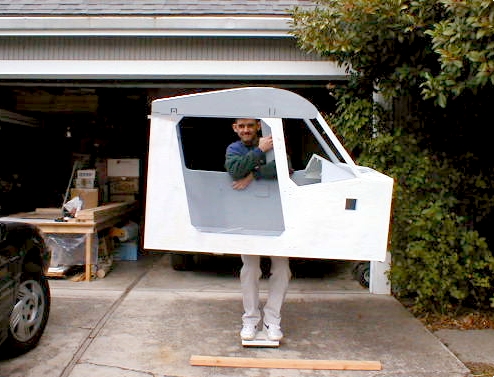
Here I am holding the essentially completed cabin assembly on the ol' bathroom scales. It weighs 54 lbs
|
|
something to fly while the KR is being built (at least 2 years). For the Flying Squirrel I will be using the 1835cc Volkswagen as converted and developed by Great Plains Aircraft Supply, but for the KR I have acquired a Corvair 110 engine which I'm in the process of converting for aircraft use. I'll make some Corvair links soon; this is a good engine! So read on to get more information on the KR or the M-19!
Read more
|
From the Archives
August 1983- Sport Aviation - TONY BINGELIS

HOW TO BEND TUBING
SUCCESSFULLY
|
|
FORTUNATELY, MOST OF our homebuilt projects do not require very much tube bending. However, I assure you that these few components are important and many of them are, for the most part, highly visible. Being so visible, their fabrication merits your very best effort. But giving it your best effort does not mean you have to make a big production out of this tube bending thing. That goes for bending steel tubes, copper tubes and aluminum tubes as well.
|
Anyone building a tube and fabric airplane will probably encounter more opportunities for developing his tube bending skills than he would if he were building a composite. These welded tube aircraft are ordinarily endowed with nicely curved tail surfaces made of small diameter steel tubing. Some of them also have tubular wing tip bows, fuselage formers and seat frames as well. Builders of other types of aircraft can add windshield and canopy bows, flap handles and sometimes "S" shaped control columns to the bent tube list.
|
Read more
EAA's Hints for Homebuilders Video series
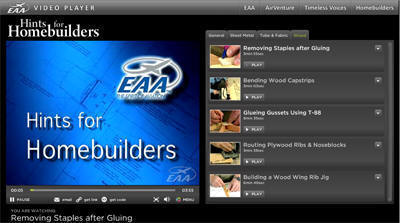 |
|
The EAA is doing a wonderful job with creating a library of short "how to" videos and are making them available for free from their website. The production values are top-notch and the information being passed along from experts and amateurs alike is invaluable.
Clicking the image to the left will take you to the "Hints for Homebuilders" page where you can scroll through the various categories of Hints videos. At the upper right hand portion of the screen are links to other video libraries that are available as
|
|
well, with titles such as "EAA", "AirVenture" and "Timeless
|
|
Voices". Hidden within these other series of informative and highly entertaining videos are gems that are of value to us homebuilders and we are in the process of compiling the best of the best videos for homebuilders such as this one on air-cooled engine cooling.
We want you to help us with deciding which of the selection of videos available from all of the libraries are the most valuable to us homebuilders.
Read more
|
|
|
| |
 A Personal View - Meet Joe Norris A Personal View - Meet Joe Norris |
|
|
By Joe Norris jnorris@EAA.org
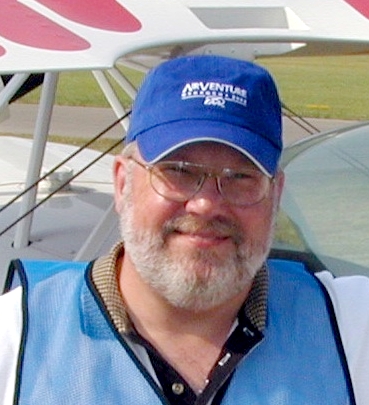
Welcome to the premier issue of Experimenter, EAA’s electronic newsletter for homebuilders. I’m excited to be a part of this effort, and to be bringing it to you under that prestigious title. The first newsletters published by EAA were titled Experimenter, and I am happy to be a part of continuing that great tradition.
Allow me to introduce myself. I’m Joe Norris, your Homebuilders Community Manager. I’ve been a member of EAA for more than 30 years, and I’m a lifetime member. You can read more about my background here: Joe's Bio. I was introduced to EAA by a friend who was building a Pitts Special. I was infected with his enthusiasm, and I had the desire to build an airplane even before I earned my pilot certificate. I enjoy helping to build that enthusiasm and desire in other EAA members, and I preach the homebuilding gospel to non-members as well. It is my firm belief that anyone who wishes to build or own a homebuilt (or any experimental aircraft) absolutely must be a member of EAA.
|
Read more
|
|
|
A Glossary of Aviation Terms and Abbreviations as related to Experimental Aviation, building and designing.
This will be a "living document" that will be updated on a regular basis. Your comments and participation are necessary to maintain and grow this list as accurately as possible. Although we are also aviators, this list will pertain more to building and designing than flying.
ABSOLUTE CEILING - A less often used term – the highest altitude an airplane can sustain level flight, or altitude above which the cabin pressurization system can no longer maintain a sufficient oxygen level for passengers and crew, and where the pressure differential is so great as to put severe stress on the pressure cabin of the aircraft. Most commercial jetliners have a ceiling of about 42,000 feet (12,802 meters) while some business jets can reach 52,000 feet or higher (15,850 meters.) Also see SERVICE CEILING.
ACCELERATED STALL - Any stall made to occur at other than 1g. Also see HIGH-SPEED STALL and SECONDARY STALL.
ACCESSORIES - Mechanical and electrical units mounted on an engine necessary for its operation such as starter, magnetos, fuel pump or the operation of other systems such as an alternator, vacuum pump, etc.
ADVERSE YAW - Yaw generated when the ailerons are used. The lifting wing generates more drag, causing an airplane to yaw (turn) toward it.
More glossary words
|
This month's poll:
|
Question and Answer:
What is the bend a cable can withstand when wrapped around a pulley?
Submitted by Bob Lake, EAA number, rglake@nexicom.net
I have looked in the standard methods book and the EAA website, home builders section, but can't find information on how much radius is permitted with a 1/8 inch cable for various diameters of pulleys. Do you know where I can look for info. I want to have a 1/8 inch cable change direction by 90 degrees. How large should the diameter of the pulley be?
ANSWER:
There seems to be very little specific info on your question, so it took a bit of digging to find a published reference. But none the less a reference has been found!
Read more
|
|
 A moment to join, a lifetime to fly A moment to join, a lifetime to fly |
|
 If you’re building, flying or even just interested in experimental aviation, the EAA community is here for you. Membership gives you access to the collective passion, knowledge, experience, and support of 170,000 members worldwide. You'll get to participate in EAA events, connect with fellow members, and have access to the tools and resources to get you airborne. Join the fun by visiting www.eaa.org/memberbenefits today. If you’re building, flying or even just interested in experimental aviation, the EAA community is here for you. Membership gives you access to the collective passion, knowledge, experience, and support of 170,000 members worldwide. You'll get to participate in EAA events, connect with fellow members, and have access to the tools and resources to get you airborne. Join the fun by visiting www.eaa.org/memberbenefits today.
|
 SportAir Workshops SportAir Workshops |
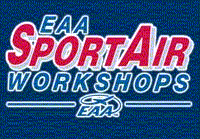
Spend A Weekend, Build Your Dream EAA SportAir Workshops offer weekend workshops that will launch you on the most satisfying and rewarding adventure of your life. These 1, 2, or 3 day courses will prepare you to build your own airplane. You can learn the needed skills and techniques to complete your amateur built aircraft. Join us for learning and fun. You'll gain the skills and confidence to take you all the way to that first fabulous flight.
Take the first step toward fulfilling your dream of homebuilt flight. To learn more about these and other upcoming workshops, as well as special EAA member tuition for the courses, visit the Workshops section of our website http://www.sportair.com/ or call 800-967-5746.
|
|
|
|